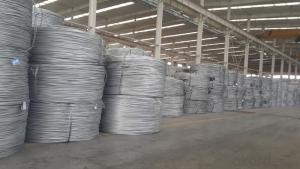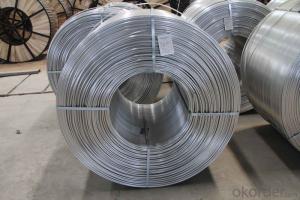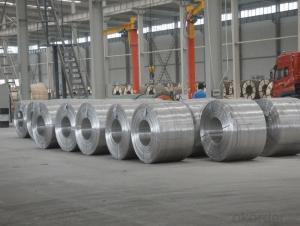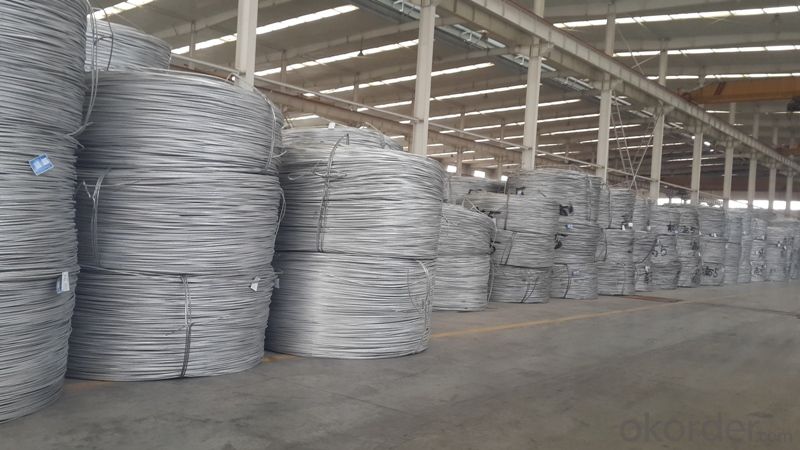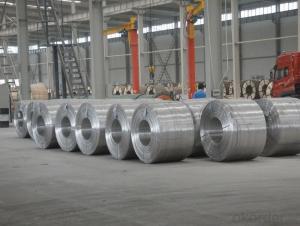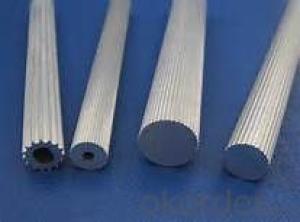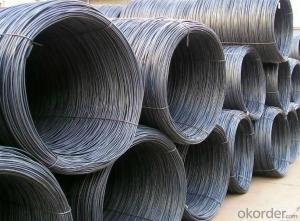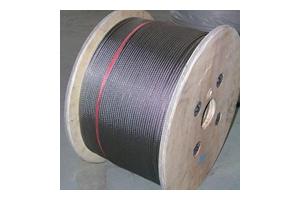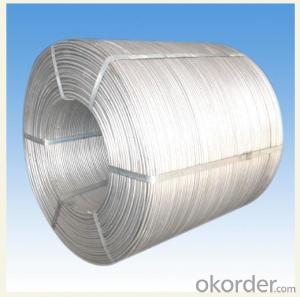High Quality Aluminum Rod for Electrical Purchase
- Loading Port:
- Tianjin
- Payment Terms:
- TT or LC
- Min Order Qty:
- 5 m.t.
- Supply Capability:
- 150000 m.t./month
OKorder Service Pledge
OKorder Financial Service
You Might Also Like
Quality Aluminum Rod for Electrical Applications
Product Description:
This product meets Chinese standards GB/T3954-2001, American standards ASTM B233:1997 and German standards EN17152:1997.
A, A2, A4, A6, A8 types available.
Temper includes O, H12, H13, H14, and H16. Diameter: 9-20mm.
Type A2 Diameter 9.5mm.
Product Features:
The Aluminum rod surface is clean and free of flaws, wrinkles, crackle, mess, kinks or other shortcomings.
Product Applications:
Product Specifications:
Chemical Composition %
Element | Si | Fe | Cu | V+ Ti+ Mn+ Cr | Other | Al |
Percentage % | ≤0.11 | 0.25 | 0.01 | 0.02 | 0.03 | ≥99.61 |
Technical data
Type | Tensile Strength (MPA) | Percentage Elongation (%≥) | electrical resistivity at 20℃ (n Ω m≤) |
A | 60-80 | 25 | 27.55 |
A2 | 80-100 | 12 | 27.85 |
A4 | 95-115 | 10 | 28.01 |
A6 | 110-130 | 8 | 28.01 |
A8 | 120-150 | 6 | 28.01 |
Product Images:
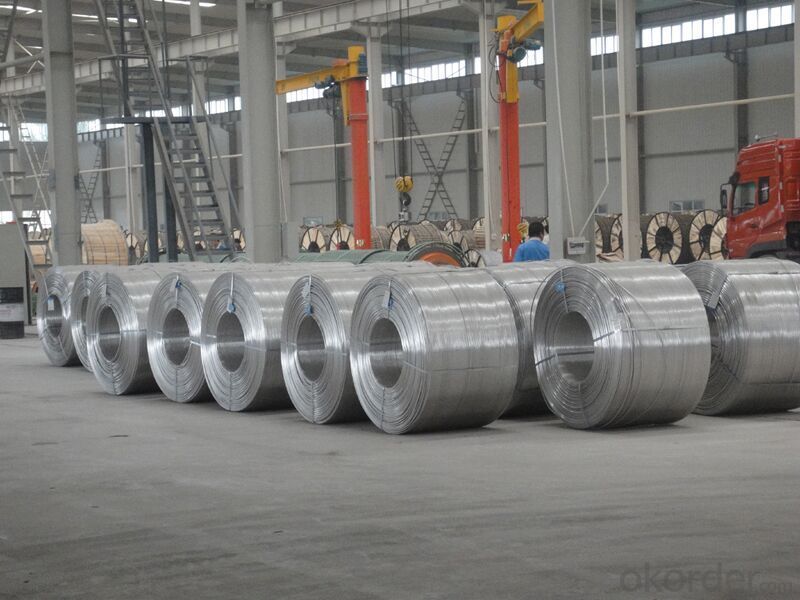
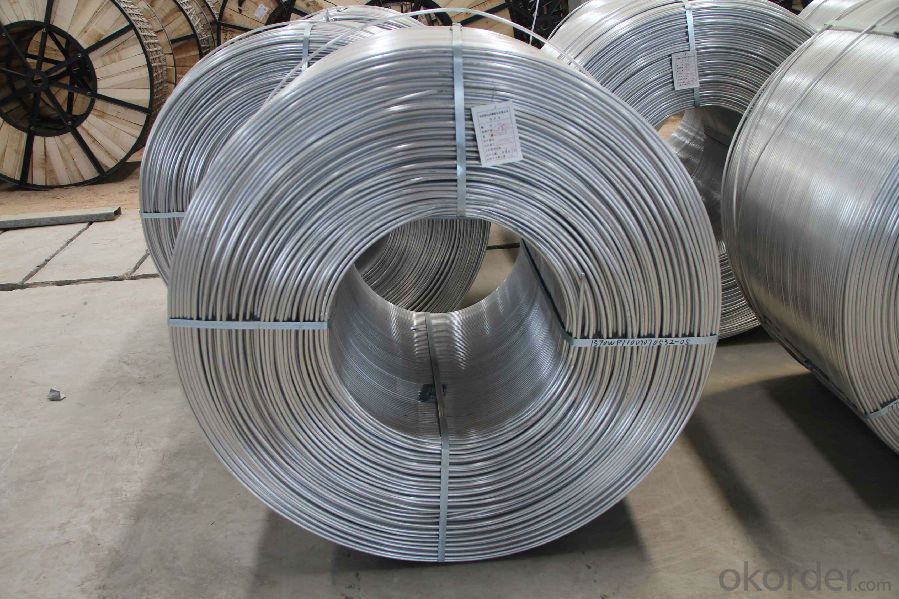
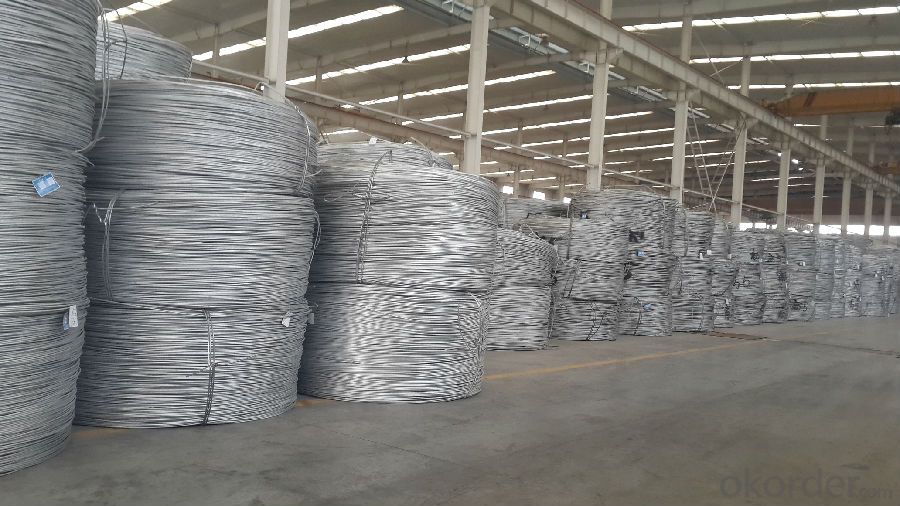
FAQ:
Q1: Why buy Materials & Equipment from OKorder.com?
A1: All products offered by OKorder.com are carefully selected from China's most reliable manufacturing enterprises. Through its ISO certifications, OKorder.com adheres to the highest standards and a commitment to supply chain safety and customer satisfaction.
Q2: How do we guarantee the quality of our products?
A2: We have established an advanced quality management system which conducts strict quality tests at every step, from raw materials to the final product. At the same time, we provide extensive follow-up service assurances as required.
- Q: Is it possible to recycle old aluminum products and use them to create new aluminum products?
- <p>Yes, old aluminum products can be recycled and reused to make new ones. Recycling aluminum is a highly efficient process that conserves resources and energy. The recycling process involves melting down the old aluminum, which requires significantly less energy compared to extracting aluminum from raw materials. This makes aluminum one of the most recycled materials in the world, with a closed-loop recycling system that allows for continuous reuse without significant loss in quality.</p>
- Q: This question asks for recent applications of aluminum in the transportation industry.
- <p>Aluminum has found new uses in transportation due to its lightweight and high strength properties. It's increasingly used in electric vehicles to reduce weight and extend battery life. Aluminum alloys are also utilized in the construction of high-speed trains and aircraft to improve fuel efficiency and performance. In addition, aluminum is employed in the manufacturing of automotive parts such as engine components, wheels, and body panels. Furthermore, it's used in the production of lightweight bicycles and other transportation infrastructure like bridges and road signs. The trend towards more sustainable and efficient transportation continues to drive innovative uses for aluminum.</p>
- Q: Describe the melting process of aluminum, including the temperature range and any specific characteristics.
- <p>The melting process of aluminum involves heating the metal to its melting point. Pure aluminum has a melting point of approximately 660.3掳C (1220.5掳F). During the melting process, aluminum changes from a solid to a liquid state. It is important to control the temperature carefully to avoid overheating, which can lead to oxidation and the formation of dross. Aluminum is a good conductor of heat, so it heats up quickly. The melting process is often carried out in a furnace or a crucible, and protective gases like chlorine or inert gases are used to prevent oxidation. The molten aluminum is then used for various applications such as casting or welding.</p>
- Q: Describe the process of aluminum oxide formation in a few sentences.
- <p>Aluminum oxide forms through a process known as oxidation, where aluminum reacts with oxygen in the air. This reaction is typically exothermic and can occur at room temperature, especially in the presence of moisture. When aluminum is exposed to oxygen, it forms a thin, protective layer of aluminum oxide on its surface. This layer prevents further oxidation and is what gives aluminum its corrosion resistance. In industrial settings, aluminum oxide can also be produced through electrolysis of aluminum oxide dissolved in molten cryolite.</p>
- Q: Is it possible to use aluminum as a material for manufacturing stents used in heart surgery?
- <p>Aluminum is not typically used to make stents for heart surgery. Stents are usually made from materials like stainless steel, cobalt-chromium alloys, or platinum-chromium alloys due to their strength, flexibility, and biocompatibility. These materials can withstand the mechanical stress within the body and are less likely to cause adverse reactions. Aluminum, while lightweight and corrosion-resistant, lacks the necessary strength and biocompatibility properties required for long-term implantation in the human body, particularly in critical applications like heart stents.</p>
- Q: What are some important safety measures to take when handling or working with aluminum?
- <p>When working with aluminum, it's crucial to take several safety precautions. Always wear appropriate personal protective equipment (PPE), including safety glasses, gloves, and a dust mask to prevent inhalation of aluminum dust. Ensure good ventilation to avoid build-up of fumes, especially during welding or cutting processes. Use proper tools designed for aluminum to prevent sparks and overheating. Be aware of the fire hazard; aluminum can burn at high temperatures, so have fire extinguishers readily available. Finally, be cautious with chemicals used in aluminum processing, as they can be harmful; always follow the manufacturer's safety instructions.</p>
- Q: This question asks for typical applications of aluminum foil in everyday life.
- <p>Aluminum foil is commonly used for food storage, as it helps preserve freshness and prevents freezer burn. It's also used in cooking, either to cover dishes to retain moisture or to create packets for steaming or baking. In the kitchen, it's often used to line baking sheets to prevent food from sticking. Beyond cooking, aluminum foil is used for insulation, in arts and crafts, and even for cleaning purposes, such as buffing glass or polishing silverware. It's a versatile material found in many households and commercial settings.</p>
- Q: This question asks if there are differences in how long different types of aluminum cookware can last.
- <p>Yes, there are differences in the durability of different types of aluminum cookware. Anodized aluminum cookware is more durable and resistant to scratches and corrosion compared to non-anodized aluminum. Cast aluminum cookware is heavier and more durable than aluminum clad cookware, which is a layer of aluminum bonded to a stainless steel core. The thickness of the aluminum also affects durability, with thicker aluminum being more resistant to warping and lasting longer. Proper care and maintenance also play a significant role in the longevity of aluminum cookware.</p>
- Q: Explain the various applications of aluminum in the construction industry.
- <p>Aluminum is widely used in building materials due to its lightweight, high strength, and corrosion resistance. It's utilized in window frames, doors, curtain walls, and roofing systems for its durability and energy efficiency. Aluminum's malleability allows it to be shaped into various forms, making it ideal for facades and decorative elements. It's also used in structural components like beams and columns, and in electrical wiring due to its excellent conductivity. Additionally, aluminum's sustainability makes it a preferred choice in green building practices, as it's recyclable and has a low environmental impact.</p>
- Q: This question asks about the various applications and purposes of aluminum in different industries and everyday life.
- <p>Aluminum is widely used due to its lightweight, corrosion resistance, and high thermal and electrical conductivity. It's extensively used in the transportation industry for manufacturing vehicles, airplanes, and ships. In construction, it's used for window frames, roofing, and structural components. Aluminum is also prevalent in packaging, particularly for food and beverages, and in electrical components like wiring and capacitors. Additionally, it's used in everyday items such as cans, foil, and cookware, and in industrial machinery and tools. Its versatility and recyclability make it a valuable material across many sectors.</p>
Send your message to us
High Quality Aluminum Rod for Electrical Purchase
- Loading Port:
- Tianjin
- Payment Terms:
- TT or LC
- Min Order Qty:
- 5 m.t.
- Supply Capability:
- 150000 m.t./month
OKorder Service Pledge
OKorder Financial Service
Similar products
Hot products
Hot Searches
Related keywords
